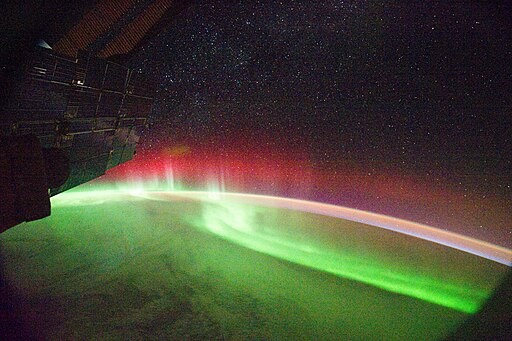In our Solar System, the northern lights, or aurora borealis, are not limited to Earth. This spectacular display of lights can also be observed in Jupiter, Saturn, Uranus, and Neptune, often seen near the poles. However, this phenomenon was captured in a rare sighting, stretching across the entire red planet.
Record-Breaking Global Auroras
NASA's Mars Atmosphere and Volatile Evolution (MAVEN) spacecraft spied the planet-wide light displays between February 3 and 5, February 7 and 10, and February 15 and 16. This spacecraft has been orbiting the red planet since 2013.
The first proton auroras were detected by MAVEN on Mars in 2016. While most of the auroras observed by the spacecraft have been localized to specific locations, these lights can also cover an entire hemisphere that faces the Sun. Researchers refer to this phenomenon as global aurora.
According to Nick Schneider of the University of Colorado's Laboratory for Atmospheric and Space Physics (LASP), Mars has experienced its greatest auroral activity in the past ten years. In February alone, three global auroras were observed on Mars, an 'aurora hat trick' that has never been seen before.
The images released by MAVEN show a purple false-color version of the ultraviolet components of aurora. Astronomers predict that Mars's aurora will likely glow green based on the studies of the spacecraft on the ultraviolet wavelengths. It was found that there is just enough atomic oxygen at the top of Mars' atmosphere to make its aurora appear the same color as the green light on Earth. So far, no camera sent to the red planet has enough nighttime settings, but experts are working to develop better cameras for future missions.
READ ALSO: Mars' 2nd Type of Aurora Described As 'Patchy' and 'Chaotic' Protecting Planet From Solar Wind
Light Displays on Red Planet
Auroras are natural light displays triggered by coronal mass ejections (CMEs), large expulsions of plasma, and magnetic fields from the Sun's corona. When these explosive outbursts reach the Earth, they trigger a geomagnetic storm where our planet's magnetic field funnels the charged particles toward the poles.
As the ions collide with gas molecules like nitrogen and oxygen, they excite the atmospheric molecules. These excited particles in the atmosphere glow, with colors determined by the type of particle being hit.
Unlike Earth, which is surrounded by a continuous global magnetic field, Mars possesses many localized magnetic fields that sporadically emerge from the surface, mainly in the southern hemisphere. These are remnants of an ancient global magnetic field that collapsed billions of years ago.
The red planet has no global magnetic field, which is made deep in the molten metal cores of planets as they spin and boil. Since Mars is smaller than Earth, its interior has already cooled off and cannot create a magnetic field. As a result, the aurora displays on Mars are not limited to its poles and are instead seen across the entire planet.
The strong magnetic field of the Earth protects us from violent solar activities that blast energetic particles. Mars lacks that protective "bubble," so it is bombarded everywhere by energetic particles. Some particles can even penetrate Mars' atmosphere so deeply that they pose serious threats to future astronauts.
RELATED ARTICLE: Aurora Colors: What Causes Red, Pink, Purple, Green and Yellow Northern Lights?
Check out more news and information on Aurora in Science Times.
RELATED ARTICLE: Aurora Colors: What Causes Red, Pink, Purple, Green and Yellow Northern Lights?
Check out more news and information on Aurora in Science Times.



![Some Brain-Injured Patients Who Died After Life Support Was Withdrawn May Have Survived, Recovered Some Level of Independence 6 Months After Injury [Study]](https://1721181113.rsc.cdn77.org/data/thumbs/full/53613/89/56/50/40/some-brain-injured-patients-who-died-after-life-support-was-withdrawn-may-have-survived-recovered-some-level-of-independence-6-months-after-injury-study.jpg)











